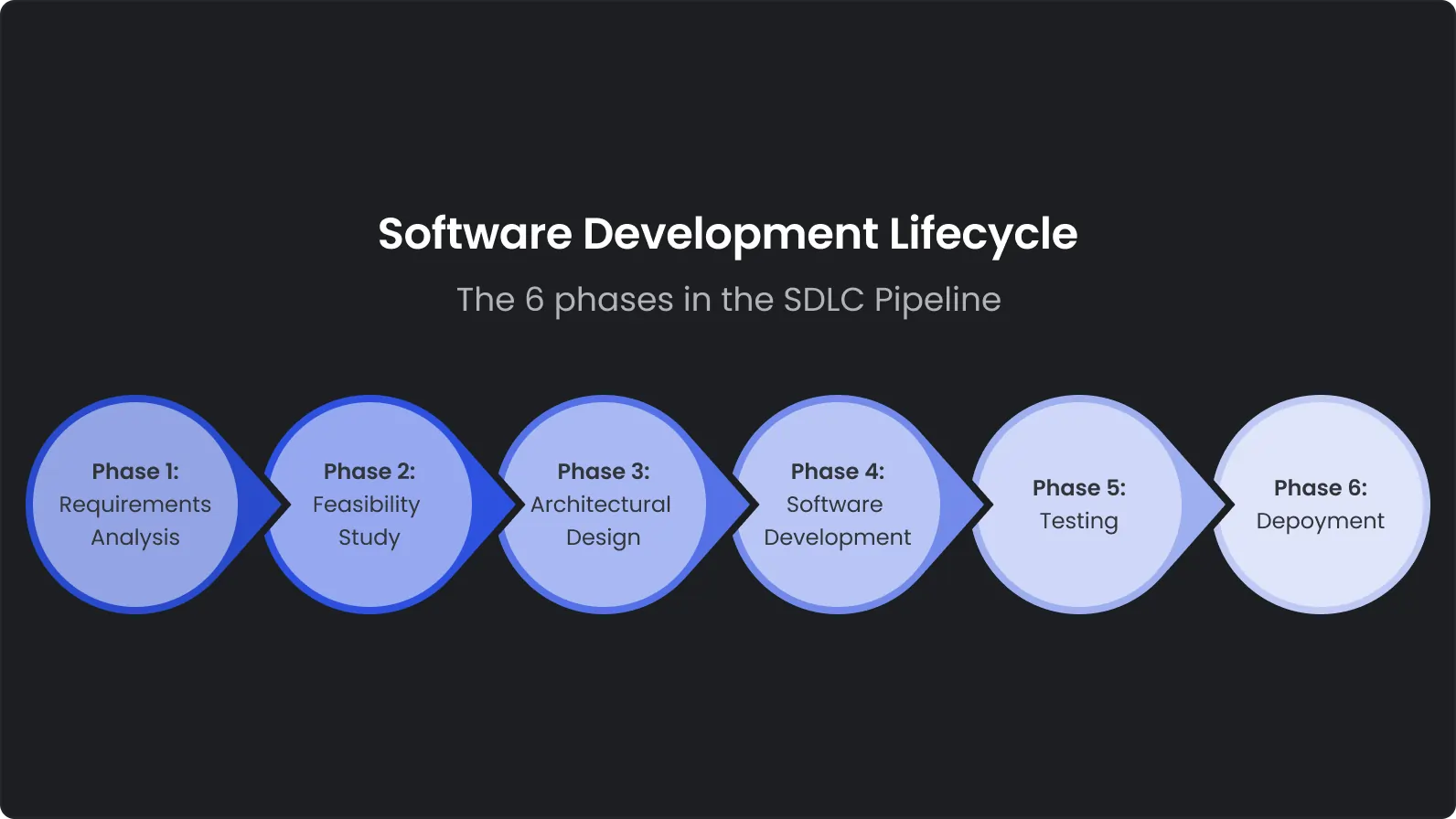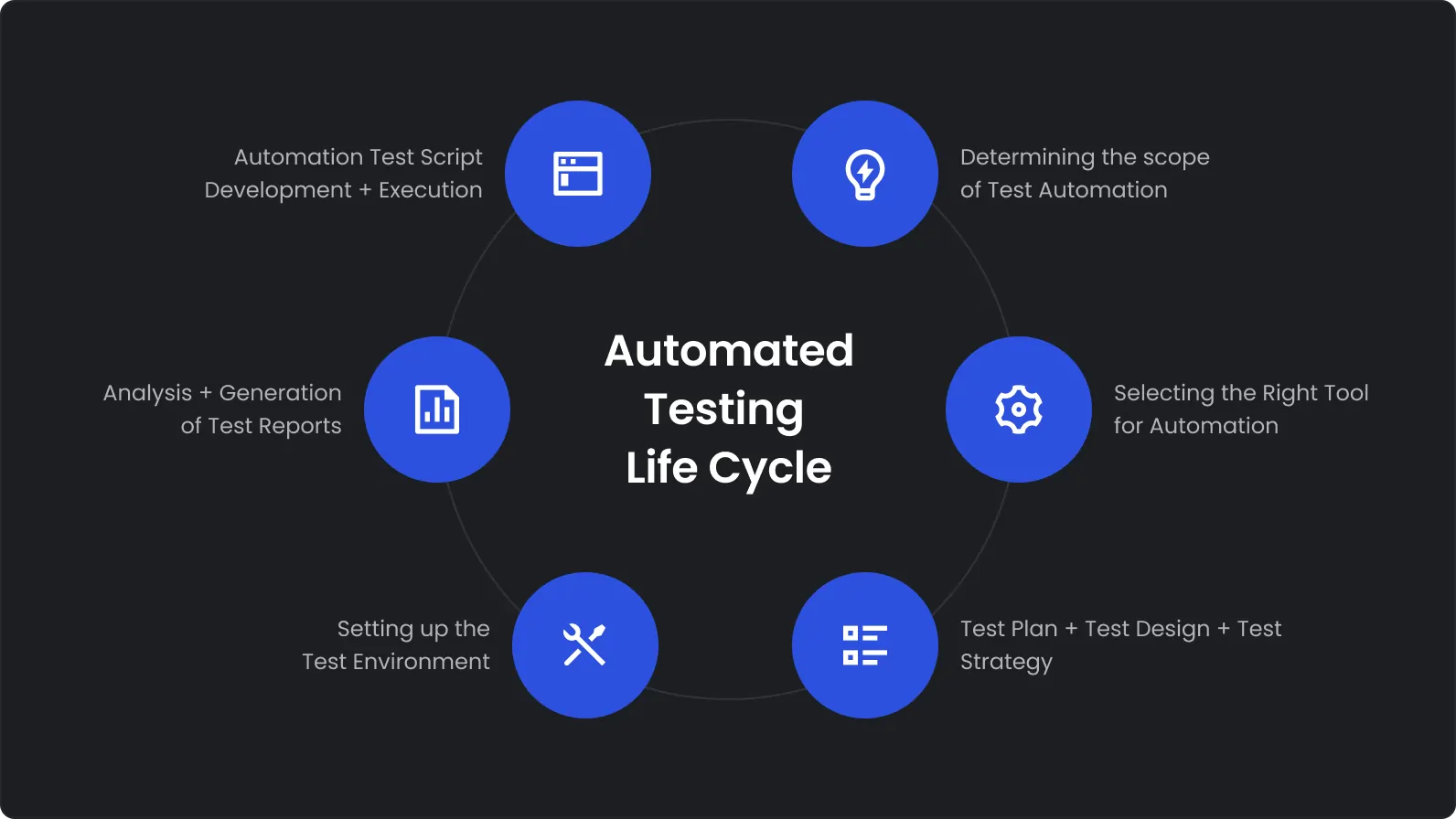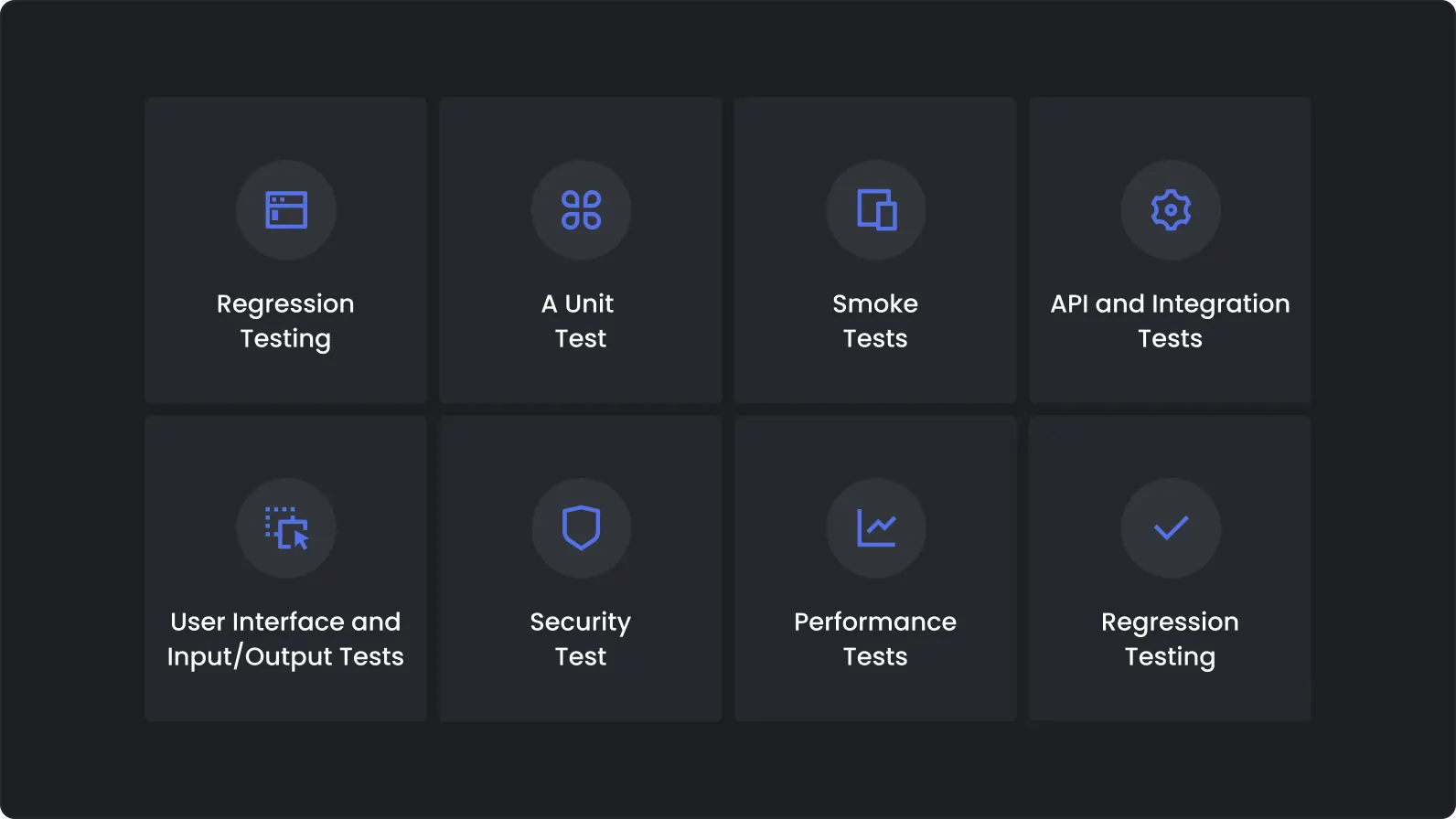11 minutes to read
What is Test Automation as a Service?


Chief Technology Officer
Summarize with:
Every code snippet is a brushstroke in the digital canvas, and precision and efficiency there reign supreme. Enter the maestro of the symphony — test automation as a service (TAaaS), a game-changer that orchestrates the art of testing with unparalleled finesse.
Forgive us for the ridiculous metaphor from the very beginning of this article, but it will help you absorb further material effortlessly and help you make a quicker decision on this matter.
Imagine a world where testing isn't a bottleneck but a seamless step between code and quality assurance. This is the promise of test automation, a realm where manual testing woes fade into oblivion. The urgency for swift and reliable testing has never been more critical, with software becoming the backbone of industries worldwide.

Let’s face it, software dictates the rhythm of our daily lives, and the importance of test automation crescendos. Picture this: a major e-commerce giant implements automated testing, reducing its release cycles from weeks to days. The result? A staggering 40% increase in software delivery speed and a 25% reduction in post-release defects.
And all this thanks to test automation as a service. Obviously, it’s all about automation; but not quite all, if we can say in this way, as it also is a service that transforms testing into an efficient tool. TAaaS is your backstage pass to a world where testing is not just a checkbox but a strategic advantage.
Automated Testing as a Service: What’s it
Test automation as a service emerges as the virtuoso, reshaping the testing landscape. At its core, TAaaS is the fusion of cutting-edge automation and on-demand testing services.
It encapsulates a comprehensive suite of tools, frameworks, and skilled professionals, providing a tailored testing experience without the burden of in-house infrastructure. Imagine having a dedicated team of testing virtuosos at your beck and call, ready to ensure the seamless functionality of your software.
Where You Can Get the Most Out of TAaaS
Agile Environments: TAaaS thrives in agile landscapes. Have the dynamic nature of agile development? Great! Implement swift and iterative testing, and they’ll “get along” quickly.
E-commerce and Retail: A flawless user experience is paramount in e-commerce. And, among other things, TAaaS ensures that every click, swipe, and transaction is a seamless (and sometimes joyful) journey.
Healthcare and Finance: Industries like healthcare and finance, where regulatory compliance and data security are non-negotiable, find rescue in TAaaS. It guarantees robust testing in compliance with industry standards.
SMEs to Large-Scale Enterprises: Whether you're a nimble startup navigating the digital terrain or an industry giant charting new territories, TAaaS scales effortlessly to meet your testing needs.
It could seem like testing fits all industries and circumstances. And yes, it does. Otherwise, we all will end up in the world of buggy software that has a terrible UX and can't secure our data.
Consistent automation testing for reliable software releases
When, Why, and by Whom Should TAaaS Be Used?

When and Why
CEO's Vision: For CEOs, TAaaS translates their vision into reality by accelerating time-to-market, enhancing product quality, and minimizing risks.
CTO's Toolbox: CTOs leverage TAaaS as a strategic tool to optimize testing processes, ensuring the robustness of software architecture and minimizing technical debt.
Project Manager's Arsenal: Project managers wield TAaaS to conquer deadlines and budget constraints. It ensures a well-oiled testing machinery without the overhead of managing an in-house testing team.
Who TAaaS is the Most Useful For

TAaaS is like a crescendo that resonates across industries, meeting the unique needs of CEOs, CTOs, project managers, SMEs, and large-scale organizations alike.
What Are the Benefits of TAaaS
Let's delve into the key benefits of this transformative service and bear witness to its contribution to the software development process.
Rapid Feedback Loops
Benefit: TAaaS ensures swift feedback on each code iteration. Like, devs generate code, automated tests check it, and only after successful approval is deployed on the product, ensuring a dynamic development environment this way.
Example: Imagine a scenario where a development team implements a feature, and within minutes, TAaaS provides comprehensive feedback on its functionality, catching potential bugs before they become entrenched.
Scalability on Demand
Benefit: You've developed a financial application, had a global product release, and now you don't need to release new versions frequently? No problem. TAaaS adapts seamlessly to fluctuating testing demands, ensuring resources are optimized without unnecessary overhead.
Example: During a peak sales period for an e-commerce platform (or let-up period for a financial app), TAaaS scales effortlessly to handle increased (or decreased) user loads, guaranteeing a smooth customer experience.
Cost-Efficiency
Benefit: By eliminating the need for extensive in-house testing infrastructure, TAaaS provides a cost-effective testing solution.
Example: A startup with budget constraints leverages TAaaS to access cutting-edge testing capabilities without the financial burden of maintaining a dedicated testing team.
Comprehensive Test Coverage
Benefit: Often, we may hear something like "but my circumstances are different than everyone else's" in everyday life. “My case is special” and stuff like that. The same applies to software development, in principle. TAaaS offers a breadth of test scenarios, ensuring robust coverage of functional, performance, and security testing.
Example: In a healthcare application, TAaaS meticulously tests not only user interfaces but also ensures data security compliance, providing comprehensive coverage critical for regulatory adherence.
Faster Time-to-Market
Benefit: With rapid, automated testing cycles, TAaaS accelerates the development process, reducing time-to-market.
Example: A software company releases updates to its mobile app more frequently, thanks to TAaaS, delighting users with new features and improvements in record time.
Enhanced Regression Testing
Benefit: TAaaS excels in repetitive regression testing, ensuring that new updates don't introduce unintended side effects.
Example: After implementing a new feature, TAaaS performs regression testing on various aspects of the software, identifying and fixing any unintended consequences swiftly.
Types of Automation Testing Offered Through TAaaS
It wouldn’t be false if we say there are a myriad of testing types. We listed only 10 of them. You can look over the list and make a rough decision about which one you need the most at the moment.

Smoke Testing
Definition: Smoke testing, the initial assessment, verifies if the critical functionalities of an application work after a new build.
Purpose: After a code update, smoke testing quickly checks essential features, ensuring the foundational aspects remain intact.
Unit Testing
Definition: Focused on individual units of code, unit testing validates the correctness of each unit.
Purpose: In unit testing, a specific function or method undergoes scrutiny, ensuring it performs as intended.
Integration Testing
Definition: Integration testing verifies the seamless collaboration of different components or systems.
Purpose: Each particular unit must be in harmony with other units. That’s precisely the purpose of integration testing — it ensures that units work harmoniously together, identifying potential conflicts.
Black Box Testing
Definition: It examines the functionality of the software without knowledge of its internal code.
Purpose: A tester assesses a web application's user interface and functionality without knowing the underlying codebase.
Functional Testing
Definition: Every application has its purpose and requirements for its quality. So functional testing evaluates whether an application meets these requirements.
Purpose: Check whether requirements are covered. For instance, testing a banking application to ensure functions like fund transfers and account balance retrieval work as intended.
Keyword Testing
Definition: Keyword testing involves creating test cases based on keywords representing actions or operations.
Purpose: A tester uses keywords like "login" and "search" to build test cases for an e-commerce website, for example.
Regression Testing
Definition: It ensures that new changes haven't adversely affected existing functionalities.
Purpose: After adding a new feature, regression testing confirms that existing features still operate flawlessly.
Data-Driven Testing
Definition: Data-driven testing uses different datasets to execute the same test scenario.
Purpose: Namely, testing an e-commerce checkout process with various sets of user data to validate its robustness.
Load Testing
Definition: Load testing assesses the system's performance under anticipated loads.
Purpose: Simulating thousands of simultaneous users to evaluate how an online streaming platform handles peak traffic.
Performance Testing
Definition: This type of testing gauges an application's responsiveness and stability under different conditions.
Purpose: Assessing how a mobile app performs under low battery conditions or poor network connectivity.
Frameworks for Automation Testing
The frameworks are the architectural pillars, shaping the efficiency and adaptability of automated testing. Let's explore the key frameworks that orchestrate this automated symphony in TAaaS.
1/ Data-driven Automation Framework
Overview: This framework separates test data from test scripts, allowing for more flexible and scalable test scenarios.
Usage Example: In an e-commerce platform, for example, data-driven testing permits the same script to be executed with various datasets, ensuring the robustness of critical functionalities like payment processing.
Hidden Pitfall: While enhancing flexibility, managing diverse datasets requires meticulous attention. If not maintained properly, the abundance of data sets can lead to increased complexity and potential errors.
2/ Keyword-driven Automation Framework
Overview: Leveraging keywords to represent actions or operations, this framework offers a user-friendly approach to creating and managing test cases.
Usage Example: In a healthcare application, non-technical testers can construct test cases using keywords like "input patient details" or "verify medical history," streamlining the testing process.
Hidden Pitfall: When you count on the keywords too much (and without a standardized library), it can lead to ambiguity and confusion, potentially impacting the effectiveness of the framework.
3/ Modular Automation Framework
Overview: Dividing the application into independent modules, this framework simplifies maintenance by focusing on specific functionalities.
Usage Example: For a financial software suite, modular testing allows isolated validation of components like transaction processing, ensuring accuracy and reliability.
Hidden Pitfall: Taking apart too much can result in challenges when modules interact with each other, requiring careful coordination to maintain a cohesive testing strategy.
4/ Hybrid Automation Framework
Overview: Combining the strengths of multiple frameworks, the hybrid approach provides adaptability and scalability.
Usage Example: A travel booking platform employs a hybrid framework, utilizing data-driven testing for user details and modular testing for booking and payment functionalities.
Hidden Pitfall: While offering versatility, a poorly executed hybrid framework can introduce unnecessary complexity. Striking the right balance between frameworks is crucial to avoid confusion and streamline testing efforts.
Obviously, the selection of frameworks should align with the specific needs and intricacies of a particular application. Each framework brings its set of advantages and challenges, and a thoughtful approach is key to orchestrating a harmonious testing symphony.
Four Common Misconceptions About Automated Testing
1/ Every Test Can Be Automated
Misconception: There's a belief that every test scenario is fit for automation, which isn't always the case.
Reality: Some tests, like exploratory or usability testing, often require human intuition and adaptability. Because they focus on discovery and rely on the guidance of the individual tester to uncover defects.
2/ Automated Testing is Expensive
Misconception: The misconception that automated testing is prohibitively expensive.
Reality: Over time, automated testing can be cost-effective for frequent activities, reducing manual testing efforts and minimizing post-release defects.
3/ Automation Testing is Better than Manual Testing
Misconception: The assumption that automated testing surpasses manual testing in all aspects.
Reality: Each has its merits; automated testing excels in repetitive tasks, while manual testing thrives in exploratory scenarios.
4/ Test Automation Setup is a One-Time-Only Event
Misconception: The misconception that once automated testing is set up, it requires no further attention.
Reality: Regular maintenance and updates are crucial to keep automated tests aligned with evolving software features. So don’t worry about the AI buzz and other “tools” that will “replace” humans. This is hardly true.
In the TAaaS landscape, understanding the nuances of frameworks and dispelling misconceptions ensures a harmonious blend of efficiency and clarity.
To Sum It Up
From data-driven precision to the user-friendly melodies of keyword-driven frameworks, TAaaS offers a versatile suite of testing orchestrations. Each framework, like an instrument in a symphony, contributes a distinct note to the holistic evaluation of software functionality.
Also, TAaaS stands as a beacon of efficiency, offering rapid feedback loops, scalability on demand, and cost-efficiency. It accelerates the software development tempo, ensuring a seamless journey from code creation to user experience.
The choice of frameworks in TAaaS mirrors the selection of instruments in an orchestra. From the meticulous data-driven approach to the user-friendly keyword-driven framework, each serves a purpose. However, it's the thoughtful combination in a hybrid framework that truly orchestrates a harmonious testing symphony.
The exploration into TAaaS is not a conclusion but an invitation to dive deeper. TaaS is not just a tool; it's a transformative force. Explore, experiment, and let the symphony of TaaS guide your software testing journey.
Team up with an award-winning software QA and testing company
Trusted by 300+ clients worldwide
Similar Posts

5 minutes to read
The cost of ignoring best practices in test automation
- Automation Testing

6 minutes to read
Why your automated tests are failing and what to do about it
- Automation Testing

10 minutes to read
Test automation as a service: Comprehensive testing process setup
- Automation Testing
